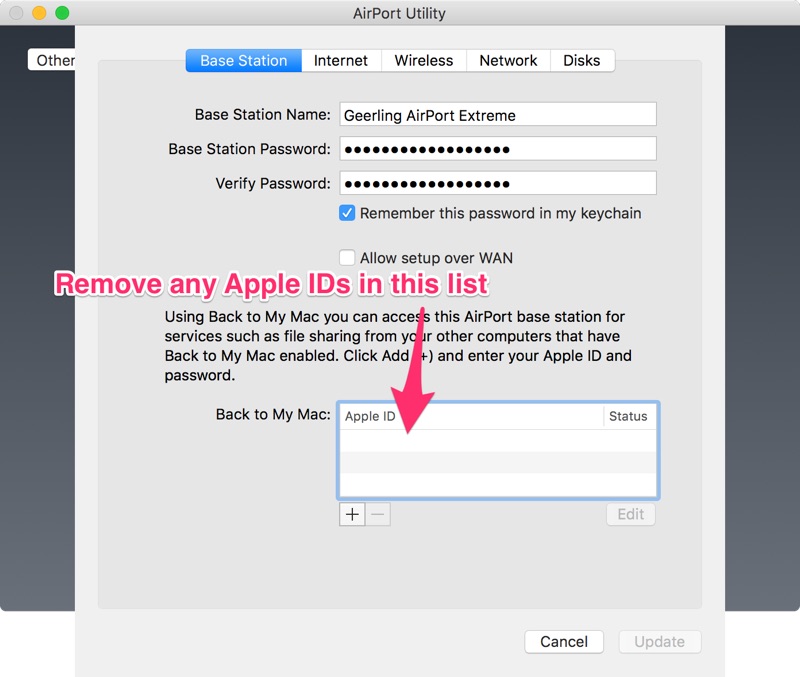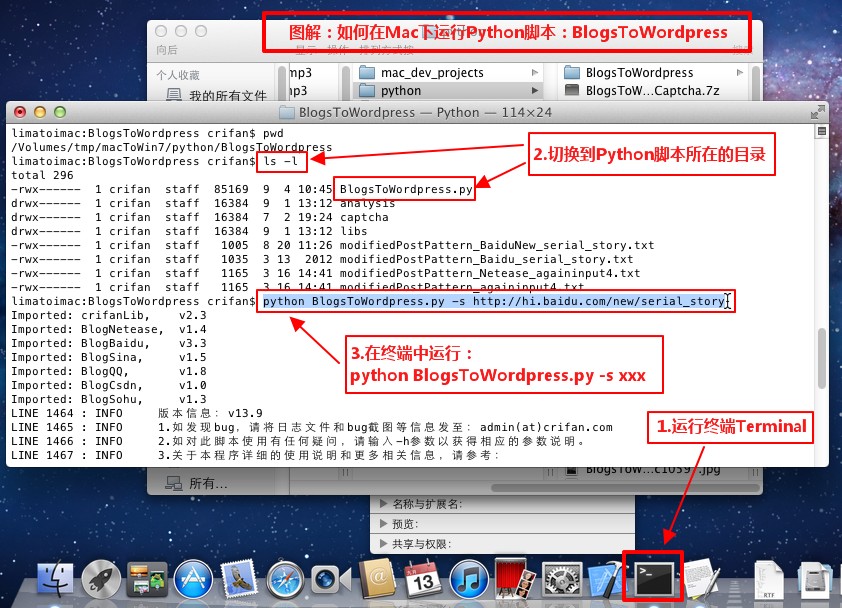
- #RUNNING MAC AIRPORT UTILITY IN PYTHON HOW TO#
- #RUNNING MAC AIRPORT UTILITY IN PYTHON MAC OS X#
- #RUNNING MAC AIRPORT UTILITY IN PYTHON MANUAL#
- #RUNNING MAC AIRPORT UTILITY IN PYTHON SOFTWARE#
- #RUNNING MAC AIRPORT UTILITY IN PYTHON SERIES#
By using a unique file for each new window it can be used to create many windows at the same time. It does some fancy things like pass your arguments, change the title bar, clear the screen to remove shell startup clutter, remove its file when its done.

Then you can run commands in a new window by just adding trun before them, like this: trun tail -f /var/log/system.log Make sure it is executable like this: chmod +x ~/bin/trun I suggest putting it in a directory in your executable path. Set AppleScript's text item delimiters to oldDelims Set theString to the parsedList as string Set AppleScript's text item delimiters to "'\\''" Set the parsedList to every text item of theString In this list, the MAC address is decoded to show the OUI (in this case the MAC is registered to 3com), followed by the unique device address. At the top of the window is the list of packets captured, each of which is decoded. Set AppleScript's text item delimiters to "'" Figure 5.7 shows a packet capture filtered to just show STP packets (this time running on an Apple Mac). Set oldDelims to AppleScript's text item delimiters This simply quotes all occurrences of ' and puts the whole thing between 's Set thePath to (POSIX path of the source_folder as string) Tell application "Finder" to set the source_folder to (folder of the front window) as alias
#RUNNING MAC AIRPORT UTILITY IN PYTHON MAC OS X#
We need to delay, terminal ignores the second do script otherwiseĭo script " cd " & myPath in front window How To: Use the Apple Terminal application on computers running Mac OS X How To: Take a snapshot of your Mac OS X preferences with Airport Location Utility How To: Dual-boot Windows XP and Mac OS X on a PC How To: Use Mac OS X-style stacks in Microsoft Windows 7 How To: Receive Microsoft Exchange email in Mac OS X 10. Tell application "System Events" to set isRunning to (exists process "Terminal") If Terminal was not running, one will be opened automatically Tell application "Finder" to set doIt to frontmost Figure out what the path is and quote it (myPath) Figure out if we want to do the cd (doIt)

This document applies to Python 1.5 and Tkinter 8.0.4 running in. It has all the machinery you need to run commands. The module Tkinter is an interface to the Tk. Again no data gets logged to the memory card when connected to the PC, so if you will use the logger always connected to the PC, then just call TIn (no need to call the Datalogger functions, which again, don’t setup or perform the data logging, they just extract data from a binary file).Here's my awesome script, it creates a new terminal window if needed and switches to the directory Finder is in if Finder is frontmost. load (fileobj) except AttributeError: plistlib module doesn't have a load function (as in Python 2) return plistlib. That way you have a good chance of getting all the right components built compatibly - and easily. rawinput doesn't exist in Python 3: return input (prompt) def readplist (filepath): '''Wrapper for the differences between Python 2 and Python 3's plistlib''' try: with open (filepath, 'rb') as fileobj: return plistlib.

If a USB-5200 model is left connected to the PC 100% of the time, it does not behave like a stand-alone logger, but instead behaves like a USB-TC/TEMP, and data can be samples live via the TIn function. For that reason, I highly recommend using a complete solution from MacPorts. With the AirPort Utility app on your iOS and iPadOS devices, you can set up and monitor your network from your devices as easily as you can from your Mac. Manage your Wi-Fi network from your devices.
#RUNNING MAC AIRPORT UTILITY IN PYTHON SOFTWARE#
There are UL datalogger calls that can be made to convert a data file, though these historically have not been popular. Keep your network running smoothly by having AirPort Utility automatically check for software updates.
#RUNNING MAC AIRPORT UTILITY IN PYTHON MANUAL#
Normally folks then use InstaCal (or perhaps TracerDAQ), to quickly/manually convert the binary data files to text/CSV files for further analysis in Excel. While there is no manual page for the airport command, attaching the -h or help flag to the command to will issue a brief list of flags and explanations of their function.

You disconnect the logger from the PC for all logging to the memory card.
#RUNNING MAC AIRPORT UTILITY IN PYTHON HOW TO#
In this wikiHow tutorial, you'll learn easy ways to launch applications from the Mac Terminal app, and how to troubleshoot and fix common Terminal troubles. You can use the Terminal to run applications or open files in the program of your choice. The logger cannot log to its memory card when connected to the PC. Your Mac's Terminal app gives you a Linux command line inside the OS X environment. You must first manually configure a logging session in InstaCal (set sensor type, which channels to log, sample rate, etc). The USB-5200 models are primarily stand-alone logger.
#RUNNING MAC AIRPORT UTILITY IN PYTHON SERIES#
Yes the USB-5200 series is listed as supported with Python on Windows.


 0 kommentar(er)
0 kommentar(er)
